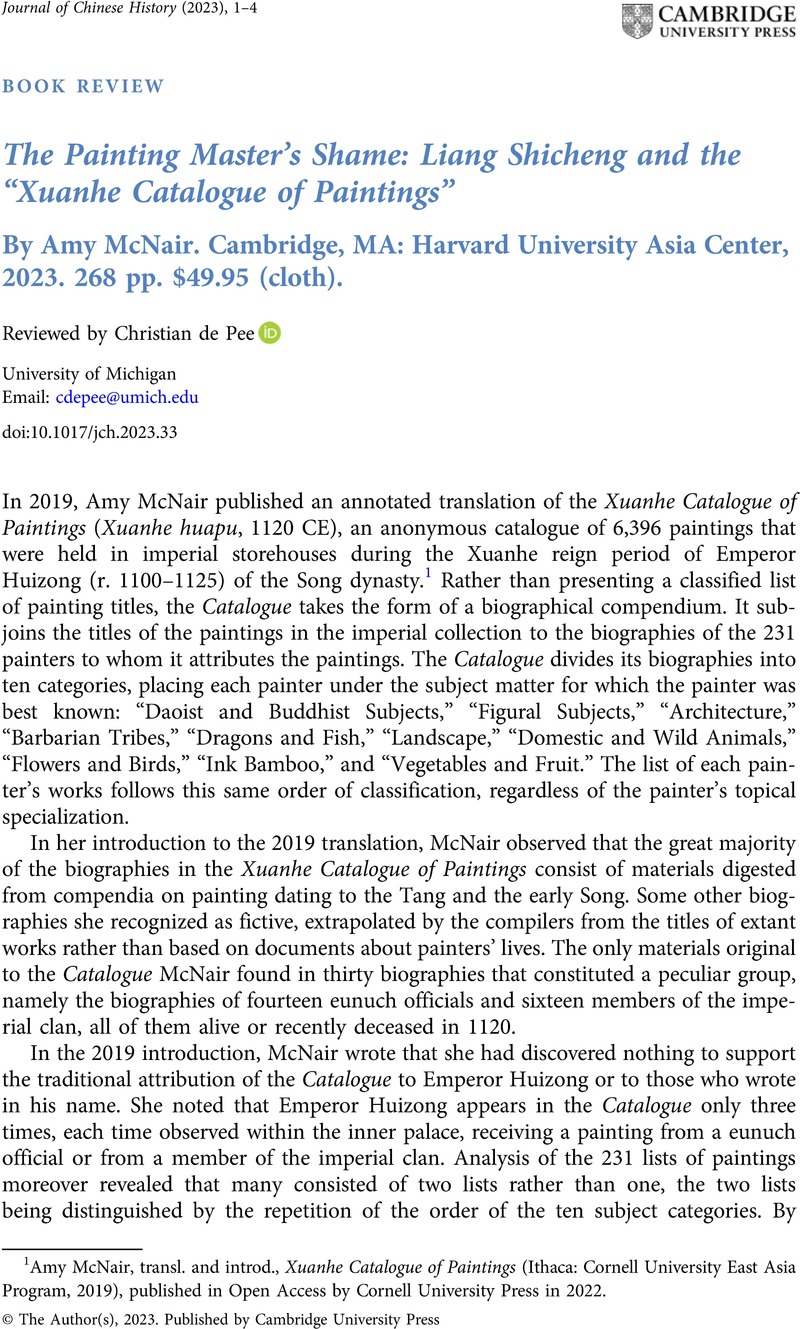No CrossRef data available.
Published online by Cambridge University Press: 30 November 2023

1 McNair, Amy, transl. and introd., Xuanhe Catalogue of Paintings (Ithaca: Cornell University East Asia Program, 2019)Google Scholar, published in Open Access by Cornell University Press in 2022.